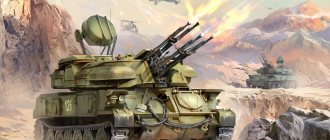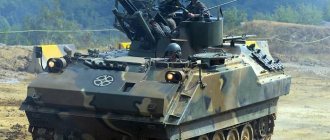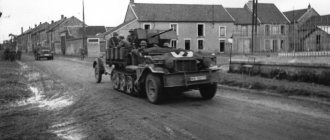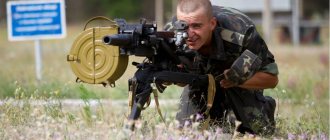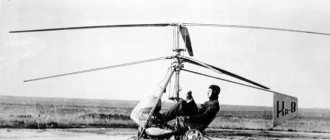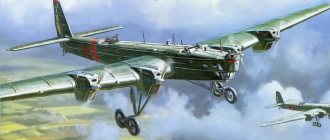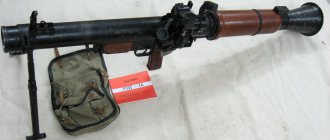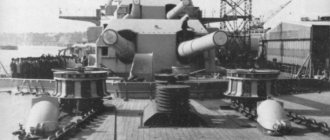ZSU-23-4 “Shilka” is a self-propelled anti-aircraft gun created in the mid-60s of the last century; it is still in service with dozens of armies around the world. Without any exaggeration, the Shilka can be called a unique weapon; of all the anti-aircraft systems built after the Second World War, it has the longest and most impressive track record.
The Middle East became the place of baptism of fire for “Shilka”, then there was the fight against American aviation in Vietnam, numerous conflicts on the African continent and the war in Afghanistan. The Afghan Mujahideen did not have aviation, so the Shilka was used for other purposes: the ZSU-23-4 was used to support ground forces and protect transport convoys. The Dushmans called “Shilka” “shaitan-arba” and were very afraid of her.
ZSU-23-4 is designed to cover ground troops, as well as combat low-flying targets. "Shilka" was part of the air defense of the regimental level. Potential opponents highly appreciated the combat effectiveness of this anti-aircraft system; at one time, the Americans and Israelis spent a lot of effort to obtain it for study.
Currently, the ZSU-23-4 is considered an obsolete anti-aircraft gun; its replacement with the more advanced Tunguska air defense system began back in Soviet times. Despite this, Shilkas are still in service with the armed forces of Russia, Ukraine and several dozen other countries. They are actively used in local conflicts in third world countries.
Since the start of mass production, 6.5 thousand units of these weapons have been manufactured.
Birth of a legend
The Second World War showed the danger of attack aircraft. Not a single army in the world could provide reliable cover for equipment and infantry from attacks by attack aircraft and dive bombers, especially on marches. The German army suffered the most. Oerlikons and FLACs could not cope with massive raids by American attack aircraft and Soviet Il-2 “flying tanks,” especially at the end of the war.
To protect infantry and tanks, Wirbelwind, ("Tornado"), Kugelblitz, ("Ball Lightning") and several other models were created. The two 30mm guns, firing 850 rounds per minute, and the radar system pioneered the development of the SPAAG, several years ahead of its time. Of course, they could no longer make a radical change in the course of the war, but the experience of their use formed the basis for post-war developments in the field of self-propelled anti-aircraft guns.
In 1947, designers of the Soviet Union began active development of a prototype ZSU-57-2, but this machine was outdated even before it was born. 2 57-mm guns, reloaded with clips, had a low rate of fire, and the lack of radar systems made the design virtually blind.
The open turret did not inspire confidence in terms of crew protection, so the issue of modernization was very pressing. The Americans added fuel to the fire by deeply studying the German experience with the Molniya models and creating their own M42 self-propelled gun using the latest technology.
The year 1957 was marked by the beginning of work on the creation of new systems of self-propelled anti-aircraft guns.
Originally there were supposed to be two. The four-barreled Shilka was intended to support infantry in battle and on the march, the double-barreled Yenisei was supposed to cover tank units. Since 1960, field tests began, during which no clear leader was identified. "Yenisei" had a long firing range, shooting down targets at an altitude of 3000 meters.
"Shilka" was twice as superior to its competitor in shooting at targets at low altitude, but not higher than 1500 meters. The army authorities decided that the second option was a priority and in 1962 a decree was issued on its adoption.
Firing ZSU-23-4 Shilka - video
NATO experts began to be interested in the Soviet anti-aircraft self-propelled gun ZSU-23-4 “Shilka” from the moment when the first data about its capabilities appeared in the West. And in 1973, NATO members were already “feeling” the Shilka sample. The Israelis got it during the war in the Middle East. In the early eighties, the Americans began an intelligence operation with the aim of acquiring another Shilka model, contacting the brothers of Romanian President Nicolae Ceausescu. Why was NATO so interested in the Soviet self-propelled gun?
I really wanted to know: are there any major changes in the modernized Soviet ZSU? The interest was understandable. “Shilka” was a unique weapon; it did not concede leadership in its class for two decades. Its contours became clearly visible in 1961, when Soviet science celebrated the victory of Gagarin's flight.
So, what is unique about the ZSU-23-4? Retired colonel Anatoly Dyakov tells the story, whose fate is closely connected with this weapon - he served for decades in the air defense forces of the Ground Forces:
“If we talk about the main thing, we for the first time began to systematically hit aerial targets with the Shilka. Prior to this, anti-aircraft systems of 23- and 37-mm ZU-23 and ZP-37 guns, and 57-mm S-60 guns hit high-speed targets only by accident. The shells for them are impact-type, without a fuse. To hit a target, it had to be hit directly by a projectile. The likelihood of this is tiny. In a word, the previously created anti-aircraft weapons could only put a barrier in front of the plane, forcing the pilot to drop bombs away from the planned location.
Unit commanders expressed delight when they saw how the Shilka not only hit targets right before their eyes, but also moved after the units in the battle formations of the covered troops. A real revolution. Imagine, you don’t need to roll the guns... When arranging an ambush for batteries of S-60 anti-aircraft guns, you will suffer - it’s difficult to hide guns on the ground. And what does it take to build a battle formation, “become attached” to the area, connect all the points (power units, guns, gun guidance station, fire control devices) with a large cable system. What crowded crews there were!.. And here is a compact mobile unit. She came, shot from an ambush and left, then look for the wind in the field... Today's officers, those who think in the categories of the nineties, perceive the phrase “autonomous complex” differently: they say, what’s unusual here? And in the sixties it was a feat of design thought, the pinnacle of engineering solutions.”
ZSU-23-4 Shilka covers T-55 tanks during exercises
The self-propelled Shilka really has many advantages. The general designer, Doctor of Technical Sciences Nikolai Astrov, as they say, is not a complete anti-aircraft gunner, managed to create a machine that has proven itself in many local wars and military conflicts.
To clarify what we are talking about, let’s talk about the purpose and composition of the 23-mm quad anti-aircraft self-propelled gun ZSU-23-4 “Shilka”. It is designed to protect combat formations of troops, columns on the march, stationary objects and railway trains from enemy air attacks at altitudes from 100 to 1500 meters, at ranges from 200 to 2500 meters at target speeds of up to 450 m/s. The Shilka can also be used to destroy moving ground targets at a range of up to 2000 meters. It fires from a standstill and on the move, and is equipped with equipment that provides autonomous circular and sector search for targets, their tracking, development of gun pointing angles and its control.
The ZSU-23-4 consists of a 23-mm quad automatic anti-aircraft gun AZP-23, power drives designed for guidance. The next most important element is the RPU-2 radar and instrument complex. It serves, of course, to control fire. Moreover, “Shilka” could work both with a radar and with a conventional optical sighting device. A locator is, of course, good; it provides search, detection, automatic tracking of a target, and determines its coordinates. But at that time, the Americans began to install missiles on airplanes that could find a radar beam using a radar beam and hit it. And a viewer is a viewer. I disguised myself, saw the plane, and immediately opened fire. And no problem. The GM-575 tracked vehicle provides the ZSU with high speed of movement, maneuverability and increased maneuverability. Day and night surveillance devices allow the driver and commander of the self-propelled gun system to monitor the road and surrounding conditions at any time of the day, and communication equipment provides external communication and communication between crew numbers. The crew of the self-propelled gun consists of four people: the SPAAG commander, the search operator - gunner, the range operator and the driver.
“Shilka” was born, as they say, in a shirt. Its development began in 1957. In 1960, the first prototype was ready, in 1961 state tests were held, in 1962, on October sixteenth, the USSR Minister of Defense issued an order for adoption, and three years later its mass production began. A little later - trial by combat.
Let’s give the floor again to Anatoly Dyakov:
“In 1982, when the Lebanese war was going on, I was on a business trip to Syria. At that time, Israel was making serious attempts to attack the troops located in the Bekaa Valley. I remember that immediately after the raid, Soviet specialists were brought the wreckage of an F-16 aircraft, the most modern at that time, shot down by the Shilka.
You could also say that the warm debris made me happy, but I wasn’t surprised by the fact itself. I knew that the Shilka could suddenly open fire in any area and give excellent results. Because I had to conduct electronic duels with Soviet aircraft at a training center near Ashgabat, where we trained specialists for one of the Arab countries. And not once were pilots in desert areas able to detect us. They themselves were targets, and that’s all, just take them and open fire on them...”
Self-propelled anti-aircraft gun ZSU-23-4 Shilka in Kabul of the armed forces of the Democratic Republic of Afghanistan
And here are the memoirs of Colonel Valentin Nesterenko, who in the eighties was an adviser to the head of the Air Force and Air Defense College in North Yemen. “At the college that was being created,” he said, “American and Soviet specialists taught. The material part was represented by American anti-aircraft installations "Typhoon" and "Vulcan", as well as our "Shilki". At first, Yemeni officers and cadets were pro-American, believing that everything American was the best. But their confidence was thoroughly shaken during the first live firing exercises that the cadets performed. American Vulcans and our Shilkas were installed at the training ground. Moreover, American installations were serviced and prepared for firing only by American specialists. On the Shilki, all operations were performed by Arabs.
Both the warning about security measures and the requests to place targets for the Shiloks much further than for the Vulcans were perceived by many as propaganda attacks by the Russians. But when our first installation fired a salvo, spewing out a sea of fire and a hail of spent cartridges, American specialists with enviable haste ducked into the hatches and took their installation away.
And on the mountain the targets, blown to pieces, burned brightly. During the entire shooting period, the Shilkas worked flawlessly. "Vulcans" had a number of serious breakdowns. One of them was dealt with only with the help of Soviet specialists..."
ZSU-23-4 Shilka shot down in Iraq
It is appropriate to say here: Israeli intelligence discovered that the Arabs first used the Shilka back in 1973. At the same time, the Israelis quickly planned an operation to capture Soviet-made ZSU and successfully carried it out. But Shilka was studied primarily by NATO specialists. They were interested in how it was more effective than the American 20-mm Vulcan XM-163 self-propelled gun, and whether it was possible to take into account its best design features when fine-tuning the West German 35-mm twin self-propelled gun "Gepard", which had just begun to enter the army.
The reader will probably ask: why later, already in the early eighties, did the Americans need another model? “Shilka” was rated very highly by experts, and therefore, when it became known that modernized versions had begun to be produced, they decided to get another car overseas.
Our self-propelled gun was indeed constantly modernized, in particular, one of the variants even acquired a new name - ZSU-23-4M Biryusa. But it didn’t change elementally. Except that over time a commander's device appeared - for ease of guidance and transfer of the turret to the target. The blocks became more perfect and reliable every year. Locator, for example.
And, of course, the authority of Shilka grew in Afghanistan. There were no commanders there who were indifferent to her. A convoy is walking along the roads, and suddenly there is fire from an ambush, try to organize a defense, all the vehicles have already been targeted. There is only one salvation - “Shilka”. A long line into the enemy camp, and a sea of fire in the position. They called the self-propelled gun “shaitan-arba”. The start of her work was determined immediately and the withdrawal immediately began. “Shilka” saved the lives of thousands of Soviet soldiers.
In Afghanistan, the Shilka fully realized the ability to fire at ground targets in the mountains. Moreover, a special “Afghan version” was created. A radio device complex was seized from the ZSU. Thanks to it, the ammunition load was increased from 2000 to 4000 rounds. A night sight was also installed.
Interesting touch. Columns accompanied by the Shilka were rarely attacked, not only in the mountains, but also near populated areas. The ZSU was dangerous for manpower hidden behind the adobe ducts - the fuse of the “Sh” projectile was triggered when it hit the wall. The Shilka was also effective against lightly armored targets - armored personnel carriers and vehicles.
Each weapon has its own destiny, its own life. In the post-war period, many types of weapons quickly became obsolete. 5-7 years - and a more modern generation appeared. And only “Shilka” has been in combat service for more than thirty years. It also justified itself during the Gulf War in 1991, where the Americans used various means of air attack, including the B-52 bombers known from Vietnam. There were very confident statements: they, they say, will smash the goals to smithereens.
And now, at low altitudes, the Shilka self-propelled gun, together with the Strela-3 complex, opens fire. One plane's engine immediately caught fire. No matter how hard the B-52 tried to reach the base, it was not possible.
And one more indicator. "Shilka" is in service in 39 countries. Moreover, it was bought not only by the USSR’s allies under the Warsaw Pact, but also by India, Peru, Syria, Yugoslavia... And the reasons are as follows. High fire efficiency, maneuverability. "Shilka" is not inferior to foreign analogues. Including the famous American installation “Vulcan”.
The Vulcan, which entered service in 1966, has a number of advantages, but in many respects it is inferior to the Soviet Shilka. The American ZSU can shoot at targets that move at a speed of no more than 310 m/s, while the Shilka works at higher speeds - up to 450 m/s. My interlocutor Anatoly Dyakov said that he acted in a training battle on the Vulcan in Jordan and cannot say that the American vehicle is better, although it was adopted later. Jordanian experts have approximately the same opinion.
A fundamental difference from the Shilka is the Gepard self-propelled gun (Germany). The large caliber of the gun (35 mm) makes it possible to have shells with a fuse and, accordingly, greater effectiveness of destruction - the target is hit by shrapnel. The West German ZSU can hit targets at altitudes of up to 3 kilometers, flying at speeds of up to 350-400 m/s; its firing range is up to 4 kilometers. However, the "Gepard" has a lower rate of fire compared to the "Shilka" - 1100 rounds per minute versus - 3400 ("Vulcan" - up to 3000), it is more than twice as heavy - 45.6 tons. And it was put into service 11 years later than the Shilka, in 1973, this is a machine of a later generation.
The French anti-aircraft artillery complex Turren AMX-13 and the Swedish Bofors EAAC-40 are known in many countries. But they are not superior to the ZSU created by Soviet scientists and workers. “Shilka” is still in service with ground forces of many armies around the world, including the Russian one.
Installation design
Even during the creation of the model, prototypes were made on the chassis of self-propelled guns ASU-85 and experimental SU-100P. The body is welded and provides good protection from bullets and shrapnel. The structure is divided into three parts.
There is a diesel power unit in the stern, a warhead in the middle, and a control compartment in the head.
On the right side there are 3 rectangular hatches located in a row. Thanks to them, it is possible to access technical components in the car, repair and replace them. The service is carried out by a crew of 4 people. In addition to the usual drivers and commanders, this includes a range operator and a senior radio receiver.
The turret of the vehicle is flat and wide, in the center of which there are 4 barrels of the AZP-23 gun of 23 mm caliber, named according to the tradition of the entire line of weapons - “Amur”. Automation is based on the principle of removal of powder gases. The barrels are equipped with a cooling system and a flame arrester.
The cartridges are fed from the side, in a belt manner, and pneumatics ensure the cocking of anti-aircraft guns. The tower has an instrument compartment with radar equipment that provides search and acquisition of targets within a radius of 18 kilometers. Guidance is provided hydraulically or mechanically. The vehicle can fire 3,400 shots in a minute.
- radar is carried out thanks to several devices;
- tube radar;
- sight;
- analog type calculating device;
- stabilization systems.
Communication is provided by the R-123M radio station, and the TPU-4 intercom operates inside the vehicle. The power plant is a drawback of the entire design. The motor has insufficient power for a 19-ton colossus. Because of this, the Shilka has low maneuverability and speed.
Defects in the placement of the motor led to problems with repairs.
To change some components, mechanics had to disassemble half of the power plant and drain all technical fluids. The movement is ensured, as on most tracked vehicles, by a pair of drive wheels and a pair of guide wheels.
The movement is carried out using 12 rubber-coated rollers. The suspension is independent, torsion bar type. The fuel tanks hold 515 liters of diesel fuel, which is enough for 400 km.
Advantages and disadvantages
One of the main disadvantages of the Shilka anti-aircraft gun is its heavy, complex and low-power chassis. Its repair and maintenance is a complex and labor-intensive task. To get to some of its components, it is necessary to dismantle many units, drain the oil and coolant. Power 240 l. s., which the Shilka engine is capable of, is insufficient for its weight, so the car is slow-moving and difficult to maneuver.
In addition, other design errors and shortcomings were made in the power plant and chassis of the vehicle, which resulted in frequent breakdowns of the anti-aircraft gun.
The Shilki radar has a short range and is quite finicky to set up. It should also be added that the car provided a minimum level of comfort for the crew.
However, all of the above disadvantages are offset by the highest level of reliability of the anti-aircraft guns of the complex. If they were correctly assembled and installed, and the cooling system was filled with water according to the standards, then the likelihood of failure or failure during shooting was practically eliminated.
Even today, the Shilka can pose a serious danger to enemy planes and helicopters, unless, of course, they fly too high.
Comparative characteristics of "Shilka"
The car in question was not the first in the world and far from the only one. American analogues were ready faster than Soviet models, but speed affected quality and combat characteristics.
Subsequent samples, having approximately the same characteristics as the Shilka, were not up to par during operation.
Let's take the Soviet Shilka and its direct competitor ZSU/M163, which was in service with the American army.
| Parameter | Shilka | ZSU\M163 |
| Caliber, mm. | 23 | 20 |
| Rate of fire, shot/min. | 3400 | 3000 |
| Coverage km. | 18 | 5 |
| Firing range km. | 2,5 | 1,5 |
| Reservation mm. | 9-15 | 38-44 |
| Unit production | 6500 | 671 |
According to the characteristics, both vehicles had similar parameters, however, the Soviet model had a higher rate of fire and fire density, creating a barrage of fire due to 4 spaced barrels, larger in area than that of the American counterpart.
The fact of the small series of the American device, as well as its removal from service and its comparative unpopularity among buyers from other countries, speaks for itself.
The Soviet model is still in service in 39 countries, although more advanced models have taken its place.
The Shilok samples captured from the USSR's allies served as the basis for the West German analogue of the Leopard, as well as many ideas for modernization.
Particularly worth noting is the reliability of combat vehicle components. According to an analysis of memories of operation, especially during field comparative tests, Western models were reliable in operation, but the Shilka still broke down less.
Features and protection
The welded body of the tracked vehicle has three compartments: the control compartment is located in the bow, the combat compartment is located in the middle, and the power compartment is located in the stern.
ZSU-23-4 “Shilka” is a long-lived Russian weapon. Moscow, 2010
The power plant of the Shilka tracked self-propelled unit is the V-6R (V-6R-1) diesel engine. Two fuel tanks with a capacity of 520 liters provide a cruising range of 400 km without refueling. The auxiliary power unit of the vehicle is a 74 hp gas turbine engine. s., which serves to power the electrical equipment of the RPK-2.
The chassis includes two drive wheels, two idler wheels with a track tensioning mechanism, two track chains and 12 road wheels. The ZSU suspension is independent, torsion bar, asymmetrical, with hydraulic shock absorbers.
Armor type: rolled steel bulletproof 9–15 mm. Modern modifications of the complex also have anti-nuclear protection equipment. A self-defense system and warnings about laser irradiation have been installed. Active night vision devices have been replaced by passive ones.
Machine modifications
New technologies, long-term operation and several cases of samples being captured by NATO countries and their allies paved the way for the modernization of the vehicle. The most famous and popular cars, descending from the Shilka:
- ZSU-23-4V, modernization that increased the reliability of the installation and increased the life of the gas turbine apparatus by 150 hours;
- ZSU-23-4V1, a modernization of the previous vehicle, which increased shooting accuracy and reliability of target tracking on the move;
- ZSU-23-4M1, improved reliability of barrels, radar and overall stability of the vehicle;
- ZSU-23-4M2, modernization for battles in the mountains of Afghanistan, equipment for combating aviation was removed, armor and ammunition were added;
- ZSU-23-4M3 “Turquoise”, which received a “friend or foe” recognition system called “Luch”;
- ZSU-23-4M4 "Shilka-M4", a deep modernization, as a result of which almost all electronic filling was replaced with new developments, new systems were added for more efficient use;
- ZSU-23-4M5 "Shilka-M5", which received a new electronic fire control system.
There were also upgrades to the machine for launching guided missiles. Since the Shilka can shoot down aircraft at low altitude, rocket models corrected this feature.
The missiles used on such models are “Cube” and its modifications.
Photo ZSU-23-4 Shilka
ZSU-23-4 “Shilka” in a traveling style: the gun barrels are covered with plugs, the locator antenna is folded, the sight heads are covered with armored caps. Closer to us is the installation commander. Further from us - either the gunner or the range operator - they have a common hatch, more likely the gunner - his place is located in the middle between the commander and the range operator
Destroyed Iraqi ZSU-23-4 "Shilka", Operation Desert Storm
Similar
ZSU-23-4 Shilka. Rate of fire. Armament. Dimensions. Weight
S-75 air defense systems Dvina, Desna, Volkhov. Compound. Rockets. Damage range
ZRPK Pantsir-S1. Armament. Price. Detection range
S-350E Vityaz air defense system. Compound. Rockets. Damage range
OSA-AKM air defense missile system. Firing range. Rockets. Compound. Dimensions. Weight
ZSU 2S6M Tunguska-M. Damage range. Rockets. Compound. Dimensions
ZRK 2K12 KUB. Damage range. Rocket speed. Principle of operation
SAM Buk-M1-2. Detection and destruction range. Rockets. Possibilities
SAM S-200 Angara, Vega, Dubna. Damage range. Compound. Principle of operation
MANPADS 9K310 Igla-1. Damage range. Weight. Possibilities
SAM 9K331 Tor-M1. Damage range. Rocket. Principle of operation
MANPADS Verba. Damage range. Rocket. Composition of the complex
SAM S-125 Neva (Pechora) Range and height of destruction. Rockets
S-400 Triumph air defense system. Damage range. Rockets. How does it work
SAM 9K35 Strela-10. Damage range. Modifications. Rockets
SAM S-300PMU2 Favorite. Damage range. Compound. Rockets
SAM S-25 Berkut. Range and altitude of damage. Rockets
SAM Sosna. Armament. Damage range. Rockets. Compound
American Patriot air defense system. Damage range. Compound. Rockets
Naval air defense missile system Dagger. Damage range. Compound. Rockets. On what ships is it installed?
ZRK 2K11 Circle. Damage range. Modifications. Compound
Anti-aircraft gun ZSU-57-2. Armament. Dimensions. Booking
KTPU "Gibka" (3M-47) Damage range. Rockets. Principle of operation
"Osa-M" - shipborne anti-aircraft missile system
MANPADS 9K34 "Strela-3"
FIM-92A Stinger - American MANPADS
S-300V (9K81) - anti-aircraft missile system
9S482M7 (PU-12M7) - battery-operated mobile control station
SAM "Avenger" - American mobile anti-aircraft missile system
MANPADS 9K32 "Strela-2"
SAM M-1 "Volna" (4K90) - ship-based anti-aircraft missile system
MD-PS - anti-aircraft missile system
ZSU-37 - self-propelled anti-aircraft gun
"Shilka" in combat
For the first time, an anti-aircraft gun took part in battles in Vietnam. The new system came as an unpleasant surprise to American pilots. The high density of fire and ammunition exploding in the air made it almost impossible to escape the Shilok fire.
New systems took an active part in the series of Arab-Israeli wars. During the 1973 conflict alone, Egyptian and Syrian vehicles shot down 27 IDF Skyhawks. In search of a tactical solution to the problem of Shilka shelling, Israeli pilots went to higher altitudes, but there they found themselves in the missile’s kill zone.
“Shilkas” played a huge role during the war in Afghanistan.
According to the regulations, vehicles must accompany convoys at a distance of approximately 400 meters from other vehicles. The war in the mountains made its own adjustments to tactics. The Muzhideen did not have aviation, so the crews did not worry about the sky. When attacking the columns, the Shilkas played the role of one of the main deterrents.
Thanks to the 4 23-mm barrels, the Shilka became the best assistant for infantry in unexpected attacks. The density and efficiency of the fire immediately canceled out all the shortcomings of the chassis. The infantry prayed for the ZSU. The angle of the barrels made it possible to shoot almost vertically, and the powerful cartridge did not take into account fortifications such as clay walls in villages. The Shilka's burst turned the Mujahideen and his cover into a homogeneous mass. For these qualities, the “spirits” nicknamed the Soviet ZSU “shaitan-arba”, translated as the devil’s cart.
But the main task was still air cover. The Shilok samples obtained by the Americans were comprehensively studied, and as a result, aircraft with more substantial armor protection appeared. To combat them, Soviet designers in the 1980s carried out a deep modernization of the ZSU in question. Simply changing the guns to more powerful ones was not enough; many important components of the design had to be replaced. This is how “Tunguska” was born, faithfully serving in the army to this day.
After the appearance of new cars, the Shilka was not forgotten. 39 countries have put it into service.
Almost no conflict of the second half of the twentieth century was accomplished without the use of this machine.
It happened that the “Shilkas” found themselves on opposite sides of the barricades, fighting with each other.
For the Soviet military, the appearance of "Shilok" was a real revolution. The deployment of traditional batteries was often a frustrating and terrifying experience for officers and men due to the numerous steps required to competently defend the skies. The new ZSU made it possible to protect airspace on the move, with minimal preliminary preparation. High performance characteristics, relevant even by modern standards, made the car a legend almost immediately after its birth.
Story
By decree of the USSR Council of Ministers of April 17, 1957, the development of two similar air defense systems was started: ZSU-37-2 “Yenisei” with a twin 37-mm artillery mount 500P and ZSU-23-4 “Shilka” with a quad 23-mm artillery mount installation 2A7. They differed from all ZSUs previously in service by the presence of radar automatic guidance systems. ZSU23-4 "Shilka" was launched into mass production in 1964.
"Shilka" in field conditions. 1997
“Shilka”, in fact, was the first ZSU that could effectively hit air targets, while other anti-aircraft systems of those times hit high-speed targets only by accident, despite the fact that the flight speeds of such targets were constantly increasing. As a result, the previously used anti-aircraft weapons could only put a barrier in front of the aircraft. In addition, the Shilka, unlike anti-aircraft guns, was mobile.
The successor to the Shilka can be considered the Tunguska anti-aircraft missile and gun self-propelled complex, which was adopted and put into mass production. However, the Shilka, which has proven itself well in many military conflicts of the second half of the 20th century, is still in service with anti-aircraft units of the Russian, Ukrainian and other armies.
